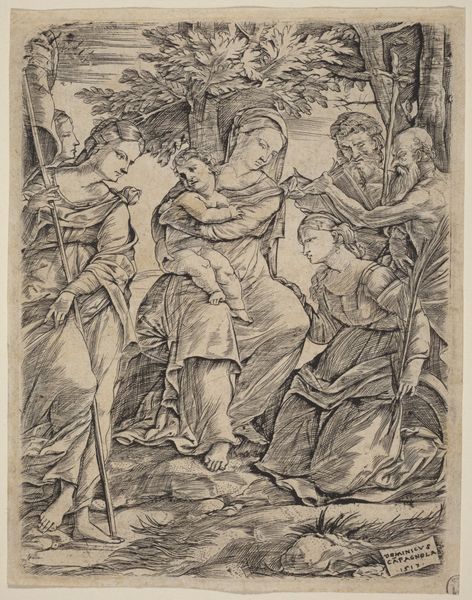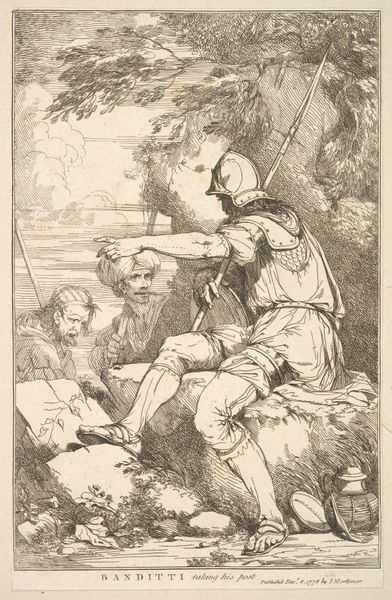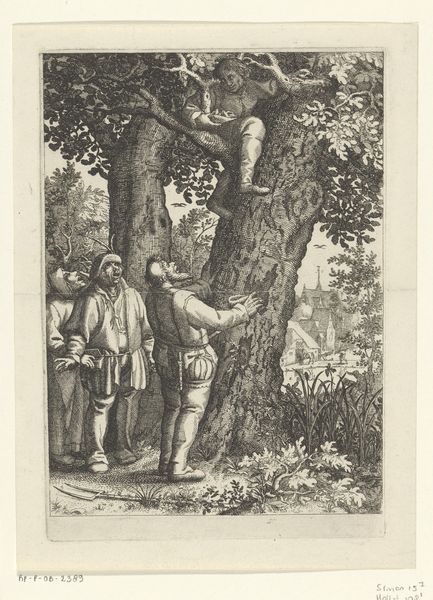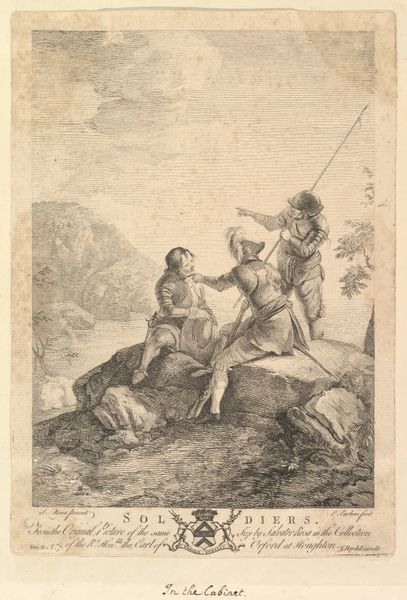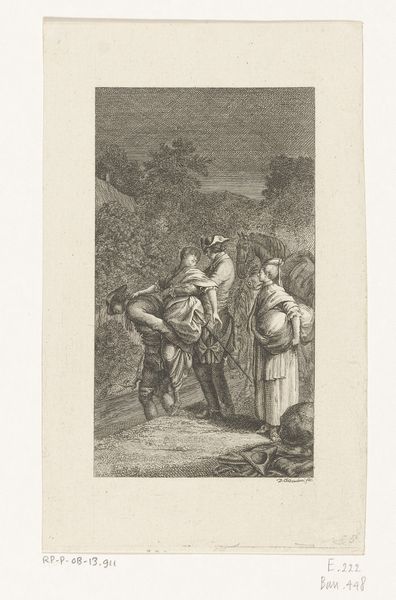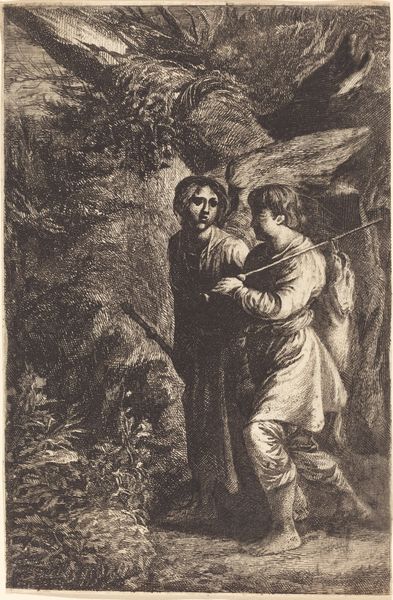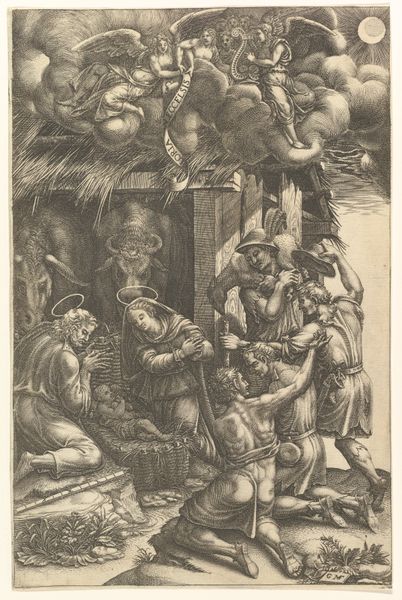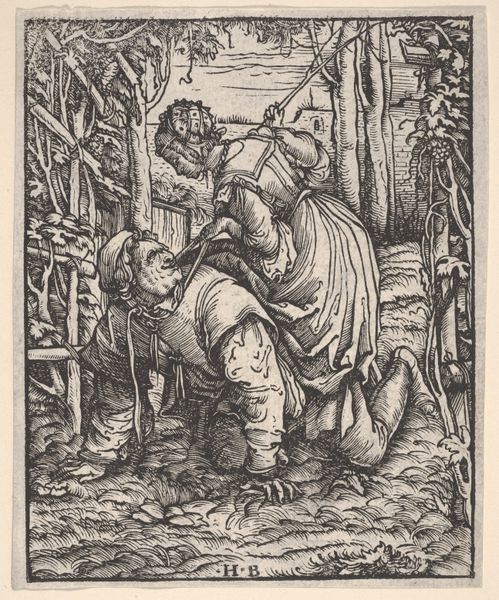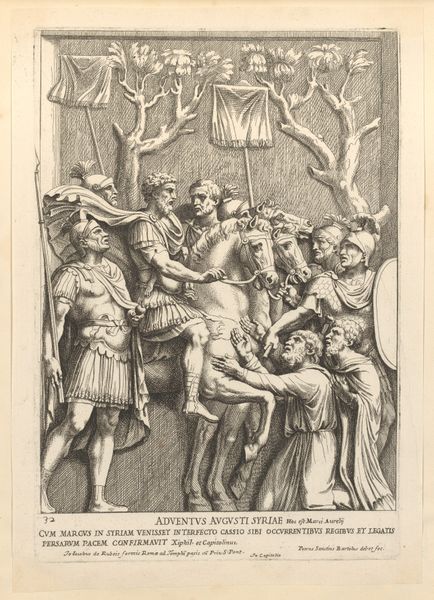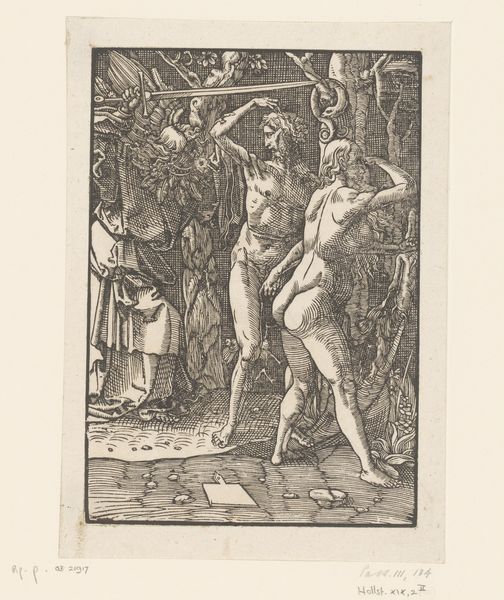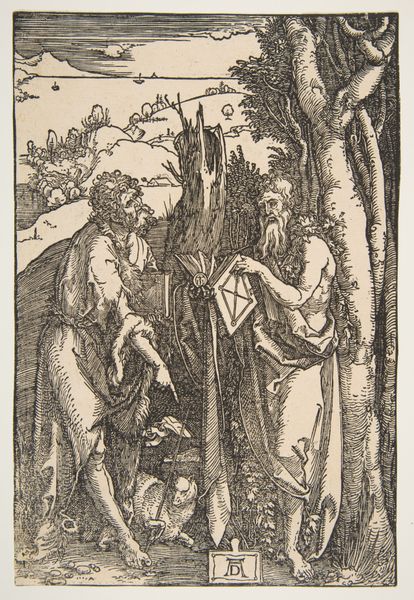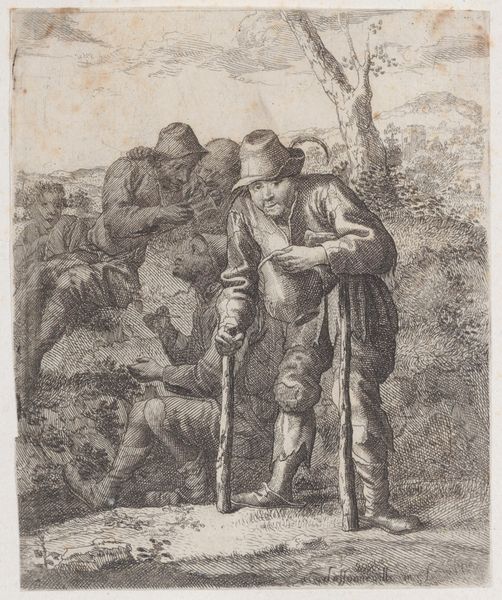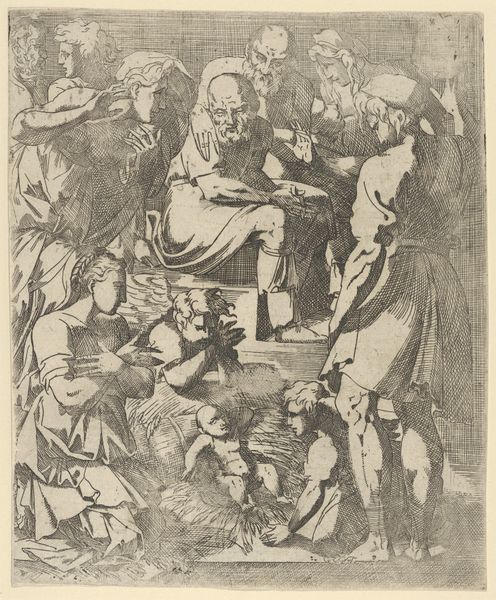
Man kneeling at the edge of a wood pointing with his right hand towards a shepherd standing in front of him leaning on a staff 1495 - 1539
0:00
0:00
drawing, print, etching, engraving
#
drawing
# print
#
etching
#
figuration
#
men
#
genre-painting
#
history-painting
#
engraving
Dimensions: Sheet: 3 3/4 × 3 1/16 in. (9.5 × 7.8 cm)
Copyright: Public Domain
Editor: So, this is Marcantonio Raimondi's "Man kneeling at the edge of a wood pointing with his right hand towards a shepherd standing in front of him leaning on a staff," made sometime between 1495 and 1539. It’s an engraving, and the scene feels quite… secretive, almost like a conspiracy unfolding. What do you see in this piece beyond just the surface narrative? Curator: It’s intriguing, isn’t it? Look at the positioning – the kneeling man is physically lower, suggesting perhaps a submissive role, a plea for guidance or intervention. Who holds the real power in the wood? The shepherd might appear in control with his staff, but even his gaze has desperation in its intensity. Editor: It almost feels like a power imbalance, and I notice they are in a somewhat isolated place. Do you think that context is important? Curator: Absolutely. Consider the period in which Raimondi was working. This image reflects societal structures. There is potential political commentary, perhaps the peasant and aristocracy dynamic and its fragility in an oppressive system? Also the landscape confines them - is it protection or is it isolation from the rest of society? How might gender further inform this scenario? What narratives could be embedded in such encounters throughout history? Editor: So, this isn’t just a pastoral scene, but maybe a statement about societal power structures? Curator: It’s likely a carefully constructed reflection of the anxieties and power plays prevalent in the artist's time. By analyzing the positioning, gesture, and setting, we can extrapolate commentary on the marginalized speaking "truth to power" or asking how systems of oppressions replicate and evolve across social lines and generational trauma. Editor: That gives me a completely different perspective! I was just looking at it formally, but the historical context makes it so much richer. Curator: Exactly. By examining historical background with critical awareness, art provides a lens through which we can unpack our own current struggles and power relations. I wonder where this will take you now...
Comments
No comments
Be the first to comment and join the conversation on the ultimate creative platform.
